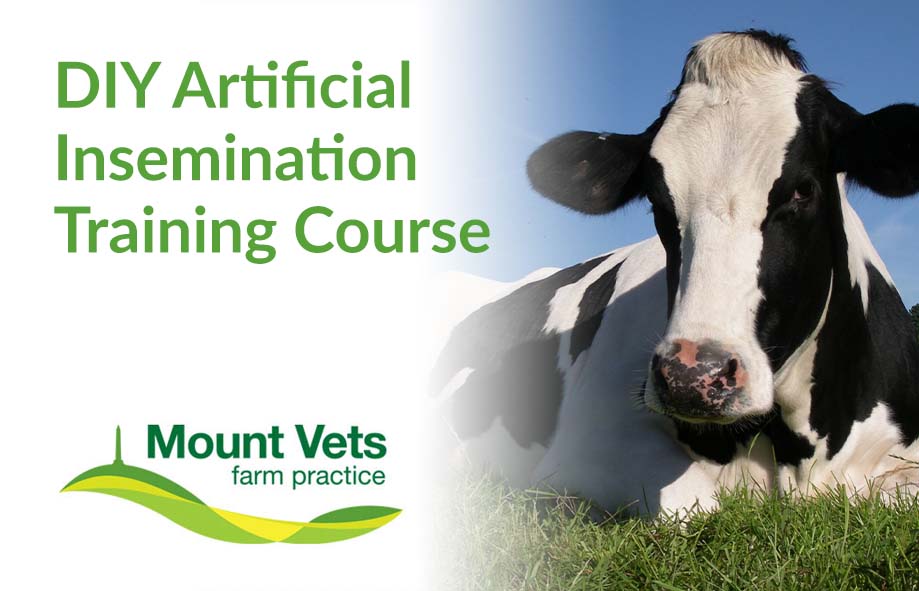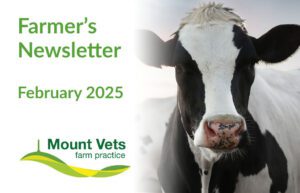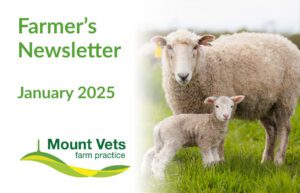August 2023
Here is the latest from our farm team at Mount Vets. If you would like any further advice or would like us to cover something in the next newsletter, please call us on 01823 662286 or contact us here.
We want to hear your feedback… Leave us a review!
Our new website is now live. We hope you enjoy an easier navigation through the pages and have had the opportunity to look at the new information that we have added. We value your feedback and comments and would appreciate if you could take the time to leave us a review! Please follow the link to share your thoughts. https://g.page/r/CTSyP_UXvSPIEAI/reviewHoniton Show
Honiton Show 2023 got a little muddy, but once again it was so great to see so many of you there. Thank you for coming to see us and allowing us to provide hospitality to you all as a way of showing our gratitude for all the hard work you do. We hope to see you again next year and hope for sunshine!
Upcoming courses

DIY Artificial Insemination
23rd, 24th, 26th & 27th October 2023
Our next 4-day DIY AI course will run on 23rd, 24th, 26th & 27th October 2023.
This DEFRA approved course is aimed at anyone who has no previous experience in the artificial insemination of cows. The 4-day course is run by our experienced farm vet Rob Mangham and is full of theory and practical sessions to make sure you leave feeling confident and safe in all aspects of AI.
The cost of the course is £500 + VAT, with a £50+VAT deposit to secure your space. (Deposit will be taken off final amount)
Please ring the practice to book your place on any of our courses on 01823 662286 or email farm@mountvets.com
"Spare a Thought for the Dung Beetle"
I spend a lot of my working day in the summer watching farmers spraying ivermectin-based wormers over the backs of beef cattle and dairy heifers on day two of the TB test. While we never have any issue with farmers using this handling time to complete other management tasks, rarely have we established whether this treatment is actually necessary right now or whether this is just a convenient time to treat. Ivermectin pour-on products are extremely convenient and easy to apply, leading to an almost exclusive reliance on these or, even worse, long-acting injectable products administered pre-turnout to avoid the need for further handling.
Dung beetles play a vital role in soil health, helping to return over 90% of the nitrogen in cattle dung back to the soil, which then improves forage uptake of valuable minerals, phosphorus, and sulphur by 80%, reducing the need for fertiliser application. As they tunnel into the ground, burying dung balls to lay their eggs in, they also improve plant root development and the soil’s water infiltration capacity, resulting in less water runoff and pollution. This cow pat disappearing act also helps to “clean” a pasture quicker, as cows prefer to graze areas that are not already soiled by pats – as well as removing habitat for disease-carrying flies to lay their eggs in and burying some gut worm larvae safely beneath the soil before consumption. The sooner these pats are buried, the shorted period of time these pats are able to continue fermenting above ground and producing methane. The nutrients returned to the soil also have a knock on benefit for other beneficial soil microorganisms like mycorrhiza fungi.
Honestly, the list goes on! These tiny creatures are out there right now tirelessly working to auto-fertilise and reinvigorate your soil for you. Sadly, ivermectin is excreted completely unchanged into the dung of treated cattle. As they show up for work, they are exposed to these insecticides which over time can kill them or render them unable to breed. Similarly, ivermectin pour-ons administered in the rain are washed straight off the animals onto the soil. For the sake of your dung beetles, ask yourself: Is this treatment actually necessary? If so, is there more I could be doing to reduce the need for worming?
In next month’s issue, we’ll take a deeper dive into effective management practices for reducing the exposure to worms and therefore necessity to worm youngstock in the first place. For now, though, before applying a wormer – we would urge you to consider submitting dung samples for a faecal egg count (FEC). This can either be collected by us on day one of your TB test or yourselves, by collecting a gloved handful of 5+ fresh pats in the field and dropping them into us at the surgery. This is easy if you’re moving cattle every day as you’ll know they’re fresh. Otherwise, fresh-looking (or ideally still warm) samples will have to do. Worming only when necessary may save you significant time and money while also slowing the development of wormer resistance!
NB: a standard FEC performed in the practice cannot identify lungworm larvae. If you have any suspicion of lungworm (coughing at grass from mid-summer to housing, poor growth rates etc) then discuss diagnosis and treatment with your vet.
An Update on in the World of Wormers:Part One
As wormer resistance continues to slide, year-by-year, from a looming threat on the horizon to a common and concerning advice call, more and more new advice surfaces from industry leaders on things that can be done to curb this trend. This advice surfaces through so many different sources now and with some farmers seeking worming advice from other vendors or effectively performing their own faecal egg counts (FECs) at home, opportunities to share these updates can be few and far between. Consider this series a little round up of tips, tricks, and developments that you may not have come across yet.
Concerning White Drenches
Many will know by now that these drenches have widespread resistance on almost all farms within most worm species. The exception (though some evidence of developing resistance is starting to emerge) is Nematodirus – which can cause severe and sudden diarrhoea and deaths. This worm mass-hatches usually in April or May, though this depends on the weather. At the first sign of diarrhoea in lambs in late spring/early summer, submit a pooled egg count sample and drench the entire group with a white drench – this is the only instance when we would recommend treating the entire group, rather than leaving some left untreated. If necessary, these may be retreated at 21 days – depending on FEC results. For those performing their own FECs, be wary of a negative result (unless a large coccidia count is observed, as the two can look very similar clinically) as lambs can become rapidly very sick even before there are many egg-laying adults on board – check again daily or discuss drenching the group anyway with your vet. NB: a count of even one Nematodirus egg on the slide at this time of year is significant and would warrant whole-group drenching. The message of this being the “first lamb drench of the season” is a little misleading as I recently realised chatting to a farmer: it is entirely possible that the age of the lambs and the timing of the mass hatch simply don’t collide and the lambs happen to pass by unscathed – if your FEC results don’t indicate that the “first worming” is necessary until, say, July, then you should use a yellow or clear drench as you would for the Summer/Autumn, as you will now be dealing with other worm species.
Concerning Yellow and Clear Drenches
These are the work horses of the worming world that we have to protect, as resistance becomes more and more widespread. These should be used through the grazing season from roughly late May onwards as necessary. Switching between these two groups, rather than relying on simply the same group year on year, is absolutely essential. These can be switched between drench applications for maximum effect, or at the bare minimum year-to-year. It is not enough to simply switch product, read the labels and make sure you are switching between a yellow (group 2) and a clear(group 3) active ingredient. You could easily be accidentally switching between two brands of product with the same active ingredient. Never drench at less than 25 day intervals (exception being white drenches for Nematodirus)unless you have good reason to believe that the wormer has been ineffective –you must allow time for at least some exposure to the worms for some immunity to develop. Never mix two wormer drenches at the same time.
Concerning Long-Acting Wormers
The only acceptable use of long-acting wormers in sheep is the injectable, long acting product containing moxidectin. This can be used either in the treatment of sheep scab or as a quarantine treatment as a precaution against asymptomatic scab carriers. The long-acting drench version of these products, however, should never be used. Aside from removing the opportunity for lambs to develop their own immunity through exposure, they also select for wormer resistance over an extended period of time, by ensuring that only the resistant adult worms survive and lay eggs onto pastures for a period of months at a time. These pastures, especially if continued over multiple seasons, will be seething with resistant worms, with little competition from susceptible ones. If the reason behind using these is time/labour issues of drenching lambs, I would strongly encourage you to perform FECs instead. This can be done, with a good dog, alone if necessary and if a low count is observed you may not need to treat them at all.
Johnes Disease in Cattle – Part 3
In last month’s newsletter, we discussed ways to reduce the risk of Johnes entering a herd and the different testing methods we can use for initial testing and ongoing control. This month we will look at the different control strategies we can use to control Johnes on farm.
Most of you will be familiar with the National Action Group on Johnes through your milk purchaser and the annual forms we have to fill in. This action group have developed six control strategies that should cover all different dairy farming businesses.
The six strategies are:
- Biosecurity Protect and Monitor
- Improved Farm Management
- Improved Farm Management and Strategic Testing
- Improved Farm Management Test and Cull
- Breed to Terminal Sire
- Firebreak Vaccination
As mentioned above, all dairy farms should fit into one of these six options.
Biosecurity Protect and Monitor
- This strategy is only suitable for farms that have no evidence of infection with Johnes at present.
- The focus therefore is on reducing the risk of infection entering the herd with regular monitoring alongside to identify as soon as possible if Johnes were to enter the herd.
- The Biosecurity advice from the previous newsletter forms the core of this control strategy with a particular focus on replacement animals entering the herd.
- Ongoing monitoring is also very important as we need to know as soon as possible if Johnes were to enter a herd.
- Monitoring can be done with a twice yearly, targeted 30 cow screen.
- The gold standard monitoring would be a routine whole herd screen.
Improved Farm Management
- This strategy involves no routine testing apart from the mandatory test that has to be performed annually.
- Therefore, every cow must be treated as if they were infected with Johnes and can involve a large amount of time and labour from the farm.
- The focus of this strategy (and subsequent strategies) is to reduce the risk of a replacement heifer calf becoming infected in the first week of life.
- As such, calving is a hugely important time.
- All calves should be snatch calved from their dams.
- Calves should only be fed colostrum from their own dams or colostrum that has been pasteurised at the suitable temperature.
Improved Farm Management and Strategic Testing
- This strategy is the same as the previous one with an added component of testing alongside.
- This is most useful on farms with a moderate to high level of Johnes.
- Strategic testing is performed at two key points in the cow calendar:
- Drying off
- Before breeding
- Testing before drying off allows us to identify high risk cows and manage them differently to reduce risk of the calf being infected.
- Testing before breeding can identify high risk animals that could be culled from the herd or potentially served to beef.
- Once identified as high risk, these cows should have a maker placed on them such as a red ear tag. This allows all members of staff to know the status of that cow and what should be happening to her.
- Quarterly milk testing alongside milk recording is also an excellent monitoring tool and can be used to make management decisions.
Improved Farm Management Test and Cull
- Similar to the previous two strategies, this option focuses on reducing the risk of the calf becoming infected early in life from its dam.
- The difference is when high risk cows are identified, they are removed from the herd as soon as possible rather than managing them differently.
- This strategy is good for herds with a low level of Johnes present and who are willing to keep up with regular testing and culling.
Breed to Terminal Sire
- Breeding to terminal sire involves no ongoing testing and is based around breeding all cows to beef so their offspring don’t remain on farm for very long.
- This is suitable for flying herds that buy in their replacement animals.
- It is possible for adult cows to become infected with Johnes if there is enough infection pressure in the environment, this is a potential draw back to this strategy if there is a highly infectious cow in the herd.
Firebreak Vaccination
- Vaccination against Johnes is not something that we recommend very often.
- It is a potential option in cases where there are a large number of clinically affected cows, as the vaccine can reduce the severity of infection.
- The major downside to vaccination is that it becomes very difficult to monitor and test for Johnes, as vaccinated animals will produce antibodies which we cannot tell apart from actually infected cattle.
- Please discuss with us before using a Johnes vaccine.
Summary
- There are six control strategies for dealing with Johnes:
- Biosecurity Protect and Monitor
- Improved Farm Management
- Improved Farm Management and Strategic Testing
- Improved Farm Management Test and Cull
- Breed to Terminal Sire
- Firebreak Vaccination
Have a question about any of the topics covered in this newsletter?
If you need any assistance with the topics covered in this newsletter, please do not hesitate to get in touch with our experienced farm vets who will be able to help. Call 01823 662286, or contact us here.

